- Clone
- DCS-22 (See other available formats)
- Regulatory Status
- RUO
- Other Names
- G1/S-specific cyclin-D3, CCND3
- Isotype
- Mouse IgG1, κ
- Ave. Rating
- Submit a Review
- Product Citations
- publications
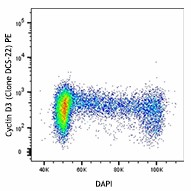
-

PHA-stimulated (3 days) human peripheral blood mononuclear cells were fixed with Fixation Buffer, permeabilized with True-Phos™ Perm Buffer, then intracellularly stained with DAPI and anti-Cyclin D3 (DCS-22) PE (top) or mouse IgG1, κ isotype control PE (bottom). -

| Cat # | Size | Price | Quantity Check Availability | Save | ||
|---|---|---|---|---|---|---|
| 684903 | 25 tests | $159 | ||||
| 684904 | 100 tests | $341 | ||||
D-type cyclins, including Cyclin D1, D2, and D3, are regulators of the Cyclin-dependent kinases 4 and 6 (Cdk4 and Cdk6) and mediate the growth factor-induced progression through the G1 phase in the cell cycle. Cyclins D1 and D3 are involved in cell-cycle progression in CDK-dependent manner and CDK-independent activation of transcription as well as metabolic control. CDKs promote cell cycle transitions in mammalian cells by phosphorylating key substrates cyclins. The active complex of cyclin D/CDK4 targets the retinoblastoma protein, which triggers the release of E2F transcription factors and activates G1/S-phase gene expression.
Abnormal expression of cyclins is involved in disease progression. Cyclin D3 is widely expressed in many tumor cells. Cyclin D3 gene is amplified in bladder carcinoma in situ. Genomic changes disrupting the expression of Cyclin D3 are associated with aberrant growth of several human B-lymphoid malignancies. Targeting Cyclin D3 by miR-138 could induce cell cycle arrest in hepatocellular carcinoma. Cyclin D3 was upregulated in breast cancer and could serve as predictor of breast cancer prognosis. Cyclin D3 can also be targeted in autoimmune diabetes and exerts a protective role on β cells by promoting their survival and fitness without affecting proliferation.
Product Details
- Verified Reactivity
- Human, Mouse, Rat
- Antibody Type
- Monoclonal
- Host Species
- Mouse
- Immunogen
- Full length Cyclin D3 of human origin.
- Formulation
- Phosphate-buffered solution, pH 7.2, containing 0.09% sodium azide and BSA (origin USA)
- Preparation
- The antibody was purified by affinity chromatography and conjugated with PE under optimal conditions.
- Concentration
- Lot-specific (to obtain lot-specific concentration and expiration, please enter the lot number in our Certificate of Analysis online tool.)
- Storage & Handling
- The antibody solution should be stored undiluted between 2°C and 8°C, and protected from prolonged exposure to light. Do not freeze.
- Application
-
ICFC - Quality tested
- Recommended Usage
-
Each lot of this antibody is quality control tested by immunofluorescent staining with flow cytometric analysis. For flow cytometric staining, the suggested use of this reagent is 5 µl per million cells in 100 µl staining volume or 5 µl per 100 µl of whole blood.
- Excitation Laser
-
Blue Laser (488 nm)
Green Laser (532 nm)/Yellow-Green Laser (561 nm)
- RRID
-
AB_2686979 (BioLegend Cat. No. 684903)
AB_2686980 (BioLegend Cat. No. 684904)
Antigen Details
- Structure
- Major isoform has 291 amino acids and predicted molecular weight of 33 kD.
- Distribution
-
Nucleus, cytoplasm and cell membrane.
- Function
- Regulatory component of the cyclin D3-CDK4 (DC) complex that phosphorylates and inhibits members of the retinoblastoma (RB) protein family including RB1 and regulates the cell-cycle during G1/S transition.
- Interaction
- CDK14, CDK4, CDK6, ATF5, EIF3K, CDKN1A, ICP0, POLR3GL, and TFIP11.
- Biology Area
- Cell Biology, Cell Cycle/DNA Replication, Signal Transduction
- Antigen References
-
1. Liu W, et al. 2004. Biochem. Biophys. Res. Commun. 321:954.
2. Sherr CJ. 1993. Cell 73:1059.
3. Saavedra-Ávila NA. 2014. Proc. Natl. Acad. Sci. USA 111:E3405.
4. Lukas J, et al. 1996. Mol. Cell Biol. 16:6917.
5. Wang W, et al. 2012. Carcinogenesis. 33:1113.
6. Cato MH, et al. 2011. Mol. Cell Biol. 31:127.
7. Zhang Q, et al. 2014. Mol. Cell Endocrinol. 382:583.
8. Chi Y, et al. 2015. Cancer Cell Int. 15:89. - Gene ID
- 896 View all products for this Gene ID
- UniProt
- View information about Cyclin D3 on UniProt.org
Related Pages & Pathways
Pages
Related FAQs
- What type of PE do you use in your conjugates?
- We use R-PE in our conjugates.
Other Formats
View All Cyclin D3 Reagents Request Custom Conjugation| Description | Clone | Applications |
|---|---|---|
| Purified anti-Cyclin D3 | DCS-22 | WB,ICFC,KO/KD-WB |
| PE anti-Cyclin D3 | DCS-22 | ICFC |
Customers Also Purchased
Compare Data Across All Formats
This data display is provided for general comparisons between formats.
Your actual data may vary due to variations in samples, target cells, instruments and their settings, staining conditions, and other factors.
If you need assistance with selecting the best format contact our expert technical support team.
-
Purified anti-Cyclin D3
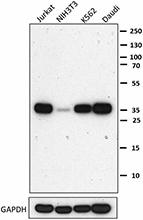
Protein (15 µg) harvested from Jurkat, K562, Daudi and NIH3T... 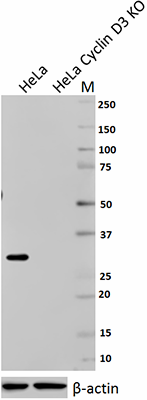
Total lysates (15µg protein) from HeLa and HeLa Cyclin D3 CR... 
Total cell lysates (15 µg total protein) from HEPG2 (low exp... 
PHA-stimulated (3 days) human peripheral blood mononuclear c... 
PHA-stimulated (3 days) human peripheral blood mononuclear c... -
PE anti-Cyclin D3

PHA-stimulated (3 days) human peripheral blood mononuclear c... 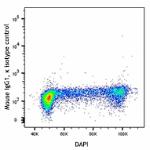
 Login/Register
Login/Register 










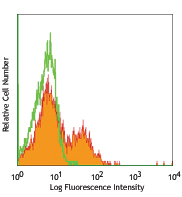
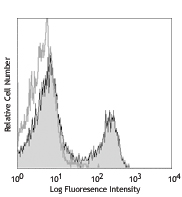
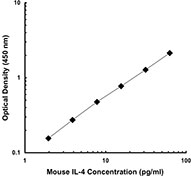



Follow Us